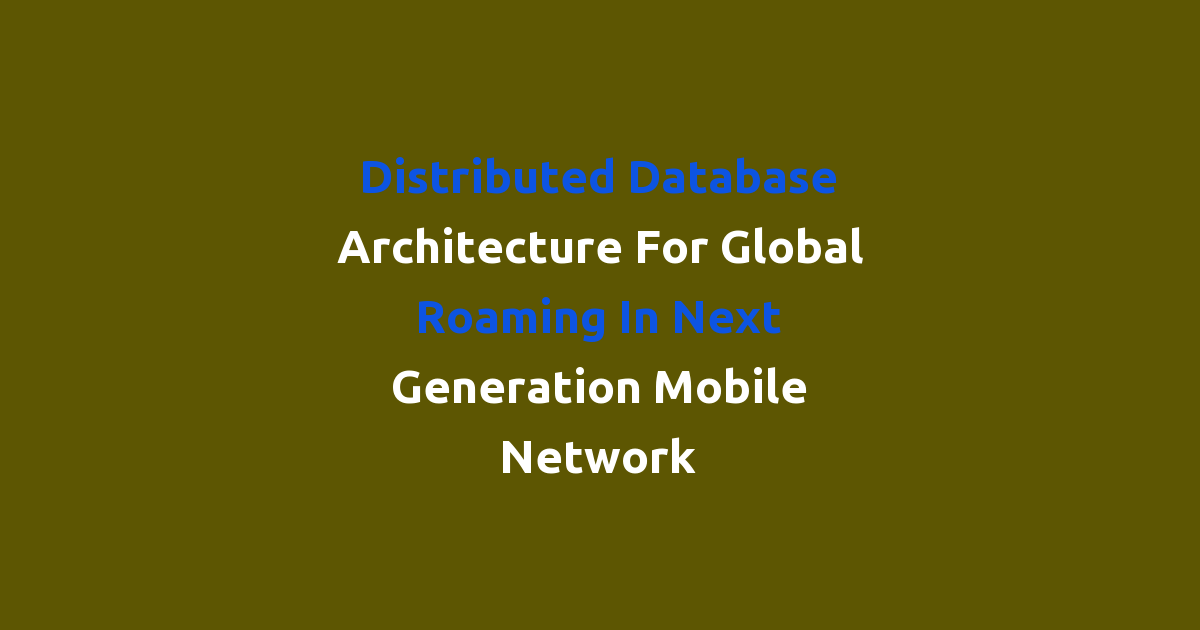Distributed database architecture for seamless global roaming in future mobile networks.
Introduction
In today’s digital world, the demand for mobile networks is growing exponentially. With the advent of next-generation mobile networks, such as 5G, the need for efficient and scalable distributed database architectures is more crucial than ever before. One of the key challenges in these networks is providing seamless global roaming services to users, regardless of their location.
Problem Statement
The existing centralized database architecture used in mobile networks is not equipped to handle the complexities of global roaming. As users travel from one country to another, they experience latency issues and data inconsistency due to the geographical distance between the user’s home network and the visited network. This results in a poor user experience and hampers the seamless operation of the network.
Existing System
The existing system relies on a centralized database architecture, where all user data is stored in a single location. When a user roams to a different network, their data needs to be transferred from the home network to the visited network, leading to delays and inconsistencies. This centralized approach also poses a single point of failure and scalability issues, especially in the context of next-generation mobile networks.
Disadvantages
The disadvantages of the existing system include:
1. Latency issues due to data transfer between home and visited networks.
2. Data inconsistency leading to poor user experience.
3. Single point of failure in the centralized database architecture.
4. Scalability issues in handling the increasing number of users and data traffic.
5. Security vulnerabilities in a centralized system vulnerable to cyber attacks.
Proposed System
To address these limitations, we propose a distributed database architecture for global roaming in next-generation mobile networks. In this architecture, user data is replicated across multiple nodes located in different geographical locations. Each node is responsible for serving the users in its vicinity, ensuring low latency and data consistency.
Advantages
The advantages of the proposed system include:
1. Reduced latency by storing data closer to the users.
2. Improved data consistency with data replication across multiple nodes.
3. Higher fault tolerance with distributed architecture.
4. Scalability to handle the increasing number of users and data traffic.
5. Enhanced security through distributed data storage and encryption protocols.
Features
The key features of the proposed distributed database architecture for global roaming in next-generation mobile networks include:
1. Data Replication: User data is replicated across multiple nodes to ensure high availability and fault tolerance.
2. Consistency Model: A strong consistency model is enforced to maintain data consistency across all nodes in the network.
3. Partitioning: Data is partitioned based on user location to optimize data retrieval and minimize latency.
4. Load Balancing: Traffic is distributed evenly across all nodes to prevent overload and ensure optimal performance.
5. Security Measures: Encryption protocols and access control mechanisms are implemented to secure user data from unauthorized access.
Conclusion
In conclusion, the transition to next-generation mobile networks necessitates a paradigm shift in the database architecture to support global roaming seamlessly. The proposed distributed database architecture offers a viable solution to the limitations of the existing centralized system. By leveraging the advantages of a distributed approach, such as lower latency, improved data consistency, and scalability, we can enhance the user experience and ensure the efficient operation of mobile networks in the future. With further research and implementation, this architecture has the potential to revolutionize the way global roaming is handled in next-generation mobile networks.

